Slant-bar corydoras - Corydoras loxozonus
Scientific name: Corydoras loxozonus
Common name: Slant-bar corydoras
Family: Callichthyidae
Usual size in fish tanks: 5 - 6 cm (1.97 - 2.36 inch)
014
Recommended pH range: 6.4 - 7.5
Recommended water hardness: 2 - 19°N (35.71 - 339.29ppm)
0°C 32°F30°C 86°F
Recommended temperature range: 21 - 25 °C (69.8 - 77°F)
The way how these fish reproduce: Spawning
Where the species comes from: South America
Temperament to its own species: peaceful
Temperament toward other fish species: peaceful
Usual place in the tank: Bottom levels
Food and Feeding
Slant-bar Corydoras (Corydoras loxozonus) are primarily bottom feeders, foraging for food in the substrate. They are most active during the evening and at night, so it’s best to feed them when they are actively searching for food. Their diet should consist of high-quality sinking flake food or granules. Supplement their diet with protein-rich treats like brine shrimp and bloodworms twice a week to provide essential nutrients and protein. Sinking algae wafers should also be offered regularly to meet their vegetable matter needs and maintain a well-balanced diet. Always ensure that food reaches the bottom of the tank where they can forage comfortably.
Origin
The Slant-bar Corydoras (Corydoras loxozonus) is native to South America, specifically the Rio Meta in Colombia. These fish inhabit slow-moving rivers and tributaries with sandy substrates and plenty of organic material, such as leaf litter, where they forage for food. In the aquarium, replicating their natural environment with soft, slightly acidic to neutral water will help ensure their health and well-being.
Sexing
Sexing Slant-bar Corydoras can be challenging in juveniles, but adult females tend to be larger and have a rounder, stockier body shape when viewed from above. Males are generally smaller and more streamlined. During the breeding season, the size and shape differences become more pronounced, as females often appear fuller when carrying eggs.
Breeding
Breeding Slant-bar Corydoras in captivity can be achieved under the right conditions, though it requires some effort. In the wild, these fish are egg scatterers, and they exhibit similar behavior in aquariums. To encourage breeding, keep the water soft, slightly acidic, and clean, and provide a high-quality, varied diet. Mimicking rainy season conditions by lowering the water temperature slightly and increasing water flow may help trigger spawning. Corydoras lay their eggs on the substrate, plant leaves, or tank glass, scattering them throughout the tank. The parents do not guard the eggs, so removing the adults after spawning is recommended to protect the eggs from being eaten. Once the fry are free-swimming, they can be fed on newly hatched brine shrimp or finely crushed fry food.
Lifespan
With proper care, Corydoras loxozonus can live for 3-5 years in captivity. To maximize their lifespan, ensure that water quality is consistently high, as these bottom-dwellers are particularly sensitive to poor water conditions. Regular tank maintenance, including water changes and monitoring for common diseases like fin rot and ich, is crucial to keeping them healthy.
Tank Requirements
The Slant-bar Corydoras thrives in well-maintained aquariums that replicate their natural habitat. These fish prefer a soft, sandy substrate, as rough gravel can damage their delicate barbels. A fine gravel or sand substrate is ideal for foraging, which is their natural behavior. Since Corydoras are social fish, they should be kept in groups of at least 5 individuals, allowing them to exhibit their natural schooling behaviors. They are ideal for peaceful community tanks but should not be housed with aggressive or boisterous fish that may outcompete them for food or cause stress. A tank of 60 liters (approximately 16 gallons) or more is recommended for a small group, with gentle water movement, moderate lighting, and efficient filtration to maintain clean water.
Short Description
Corydoras loxozonus, commonly known as the Slant-bar Corydoras, is a peaceful and social species native to the Rio Meta in Colombia. They are best kept in groups and make excellent additions to community tanks with other peaceful species. To ensure their health and well-being, they require soft, sandy substrates to protect their delicate barbels, and a varied diet of sinking foods, including algae wafers and protein-rich treats. Known for their active, bottom-dwelling nature, Slant-bar Corydoras are easy to care for and highly adaptable to a range of aquarium conditions, making them a great choice for beginner and experienced aquarists alike.
Pictures
Bought by aqua-fish.net from jjphoto.dk.






 Aspidoras
Aspidoras  Giant
Giant  Hognosed
Hognosed  Emerald
Emerald  Cascarudo
Cascarudo  Acre
Acre  Adolfo’s
Adolfo’s  Bronze
Bronze 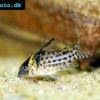 Agassizii’s
Agassizii’s  Spotted
Spotted  Skunk
Skunk  Corydoras
Corydoras 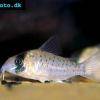 Fairy
Fairy  Corydoras
Corydoras  Pink
Pink 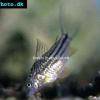 San
San  Bond’s
Bond’s  Spotted
Spotted  Tailspot
Tailspot  Concolor
Concolor  Cope’s
Cope’s 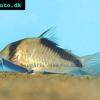 Sand’s
Sand’s  False
False  False
False 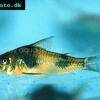 Ehrhardt’s
Ehrhardt’s  Elegant
Elegant 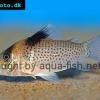 Saddle
Saddle  Fowler’s
Fowler’s  Gomezi
Gomezi 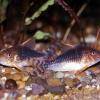 Palespotted
Palespotted 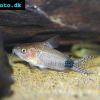 Guapore
Guapore  Dainty
Dainty  Mosaic
Mosaic  Imitator
Imitator  Julii
Julii  Leopard
Leopard 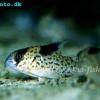 Black
Black  Bluespotted
Bluespotted  False
False  Bandit
Bandit  Mini
Mini 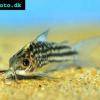 Napo
Napo  Corydoras
Corydoras 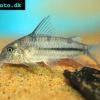 Blue
Blue  Nijssen’s
Nijssen’s 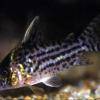 Ornate
Ornate  Peppered
Peppered  Panda
Panda  Albertini
Albertini  Pastaza
Pastaza  Corydoras
Corydoras  Many-spotted
Many-spotted  Pretty
Pretty  Dwarf
Dwarf  Iridescent
Iridescent  Reticulated
Reticulated 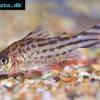 Bannertail
Bannertail  Robust
Robust  Schwartz’s
Schwartz’s  Black
Black 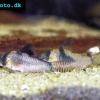 Longnosed
Longnosed  Seuss’
Seuss’  Smudge
Smudge  Masquerade
Masquerade 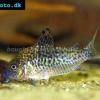 False
False  Millenium
Millenium  Pinkthroat
Pinkthroat  Sterba’s
Sterba’s  Longsnout
Longsnout  False
False  Miguelito
Miguelito 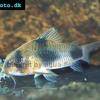 Twosaddle
Twosaddle  Xingu
Xingu 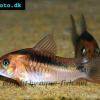 Black
Black  Porthole
Porthole  Flagtail
Flagtail  Brown
Brown  Spotted
Spotted